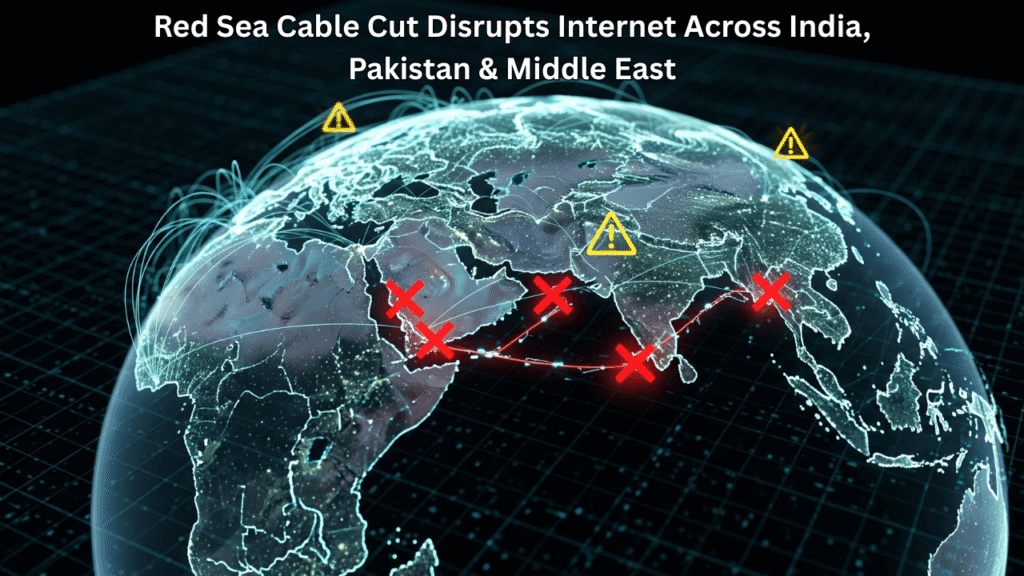What Happened?
A major internet disruption struck millions of users across South Asia and the Middle East in early September 2025 after multiple undersea internet cables running through the Red Sea were severed.
Initial reports from global internet monitoring agencies confirmed that at least four critical submarine cables—which carry a significant portion of data traffic between Europe, Asia, and Africa—were damaged, leading to widespread connectivity issues and slower internet speeds.
Regions Affected
Countries that experienced the most severe slowdowns and outages included:
- India — especially western coastal regions and data centers relying on Middle Eastern routing
- Pakistan
- United Arab Emirates, Saudi Arabia, and other parts of the Gulf Cooperation Council region
- Parts of East Africa, which are also connected through the same cable corridor
Why the Red Sea Is So Important
The Red Sea is one of the world’s most critical internet chokepoints. Around 25% of global internet traffic between Asia and Europe passes through undersea fiber cables in this narrow corridor connecting the Mediterranean Sea via the Suez Canal to the Indian Ocean.
Also Read
When even one of these cables is damaged, it can disrupt terabits of data per second and cause cascading effects across multiple continents.
Possible Cause of the Damage

While a formal investigation is still underway, preliminary analysis suggests the damage may have been caused by:
- Anchors of ships dragging on the seabed
- Seismic activity or undersea landslides
- Potential deliberate sabotage, though this has not been confirmed
Undersea cables are typically buried under the seabed in shallow waters and armored to prevent such incidents, but they are still vulnerable to accidents.
How It Affected Users
The impact was immediately visible:
- Slow loading websites and buffering video content
- Disruption in banking systems, stock exchanges, and cloud services
- Packet losses and high latency during international video calls
- Businesses dependent on real-time data (like fintech and logistics) faced delays
Global content delivery networks (CDNs) and internet service providers scrambled to reroute traffic via longer alternate paths through South Africa and Eastern Europe.
Restoration Efforts Underway
Specialized undersea cable repair ships have been dispatched to the affected areas. According to telecom officials, repairs could take several weeks, depending on weather and sea conditions.
In the meantime, ISPs are working with global internet exchanges to minimize the impact on end users by rerouting and load balancing.
Long-Term Lessons
This incident highlights how fragile global internet infrastructure can be:
- Need for more diverse routing paths to avoid single points of failure
- Investment in satellite internet technologies (like Starlink) as backup
- Greater coordination between telecom operators and governments in securing cable routes
Conclusion
The Red Sea cable cut of September 2025 has been a stark reminder that the internet’s backbone lies deep underwater, and its disruption can send shockwaves through economies and daily lives. Strengthening these global arteries is critical to ensuring a stable and resilient internet for the future.





